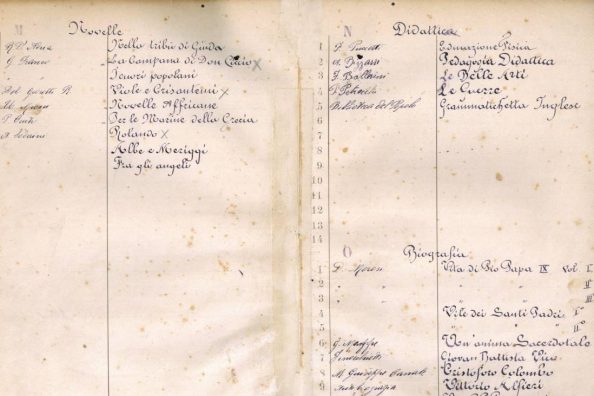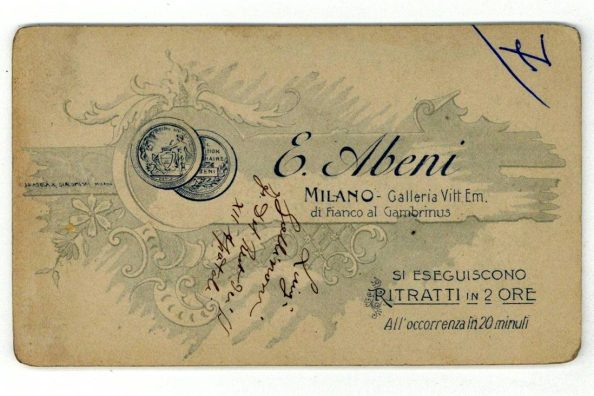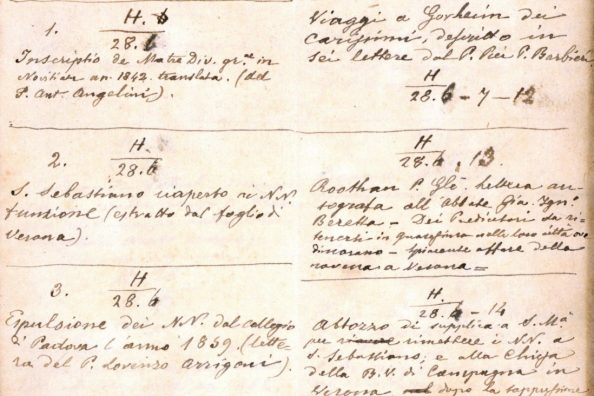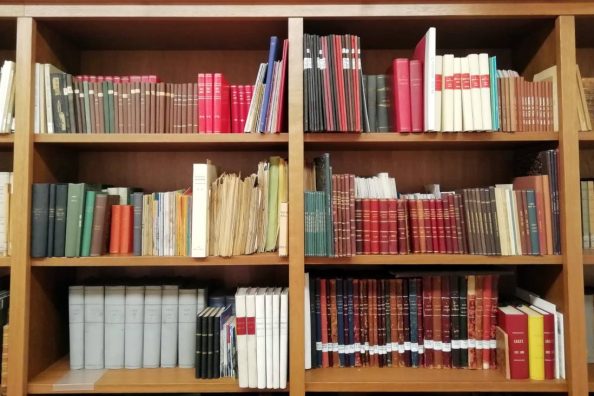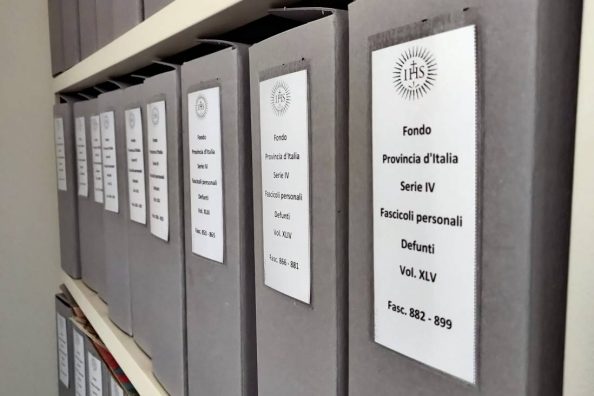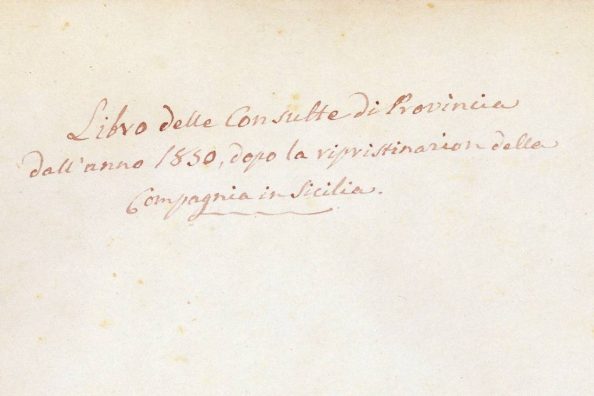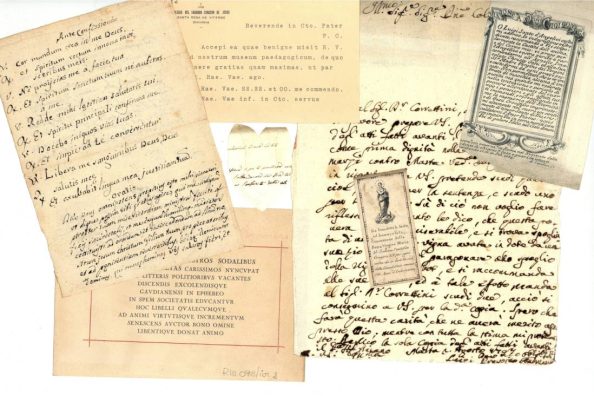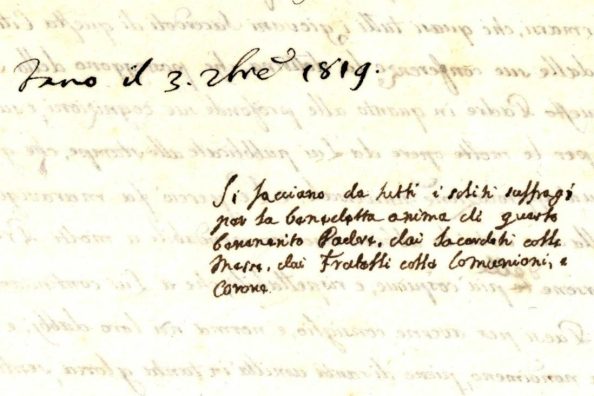Recitals and prizes in Jesuit colleges
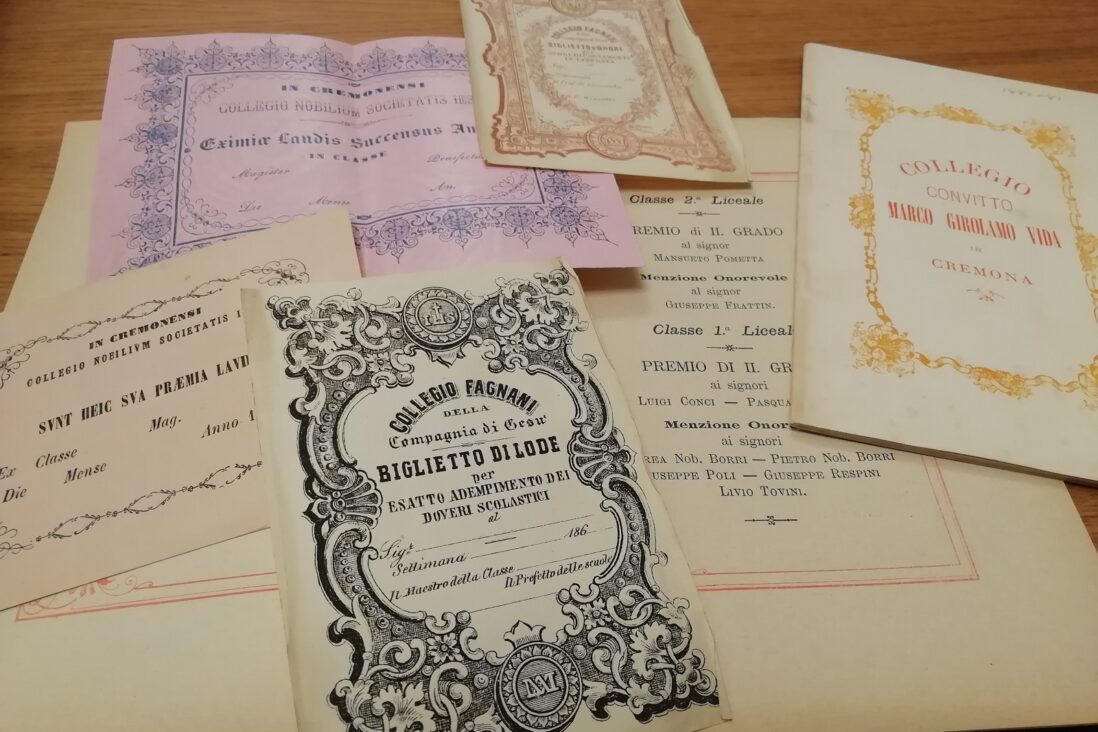
How many of us participated in verb or multiplication table competitions at school? In the boarding schools of the Society of Jesus, there were no candies up for grabs or maths competitions, but there were academies and prizes.
In addition to the usual grading that pupils received from their teachers, for questions, dictations and compositions, there were annual awards in the colleges. These took place at the end of the school year and provided for the awarding of a prize – often symbolic or consisting of medals with effigies of the Virgin Mary or saints – to the best pupil who had distinguished himself in each teaching subject, in each class, for the best pupils there were also performances with poetry recitations or readings of their own compositions.
In addition, on these occasions, certificates were presented to students who had passed their exams or graduated. A ceremony was organised, attended by parents, the entire school community, and Jesuits. The column has already dealt with academies and specimens in reference to the Shkodra boarding school, where the essays were particularly graphic. We have traces of these events in the colleges of various provinces between the 19th and 20th centuries.
During the year, the successful questioning was not only relevant for the pupil’s evaluation but was crucial for a weekly event the boys cherished: the field trip and the cinema. Before the advent of technology, half a day or a whole day a week – were set aside for the boys’ recreation, taken to locations near the boarding school for an outing with a snack or lunch, sometimes even on horseback. But already by the 1910s, in several boarding schools the weekly outing was devoted to the cinema, which aroused the boys’ interest first with the first silent shorts, then – as the decades went by – with films.
Each pupil was given a small coloured card once a week, depending on his or her performance, only one colour – white in some boarding schools, pink in others – ensured the reward of an outing, while the red or black one indicated a ban on going out, either because the performance was low or because some offence had been committed. Everything contributed to the choice between one card or the other: the mark given in the interrogations, behaviour in class and in the dormitory, any misdemeanours. Those who did not come to the cinema stayed at boarding school to study, meditating on their misdeeds.
This did not, however, exclude the possibility that those who skipped a few trips might not receive a prize at the end of the year for having distinguished themselves in certain subjects. On the occasion of the final award ceremony, the boarding school had booklets printed to commemorate the event, bearing the names of the pupils celebrated, a copy was given to each of them and one was kept among the papers in the archive.
This is a rather useful source for our researchers, both to study the history of pedagogy but above all to verify the names of the boarders, often listed class by class, with the name of the winner by subject. In the absence of lists of boarders, this source can help to reconstruct the school career of former pupils, while boarding school documentation allows us to reconstruct the organisation of academies and awards but also the entire school year.
In the photo you can see some examples of cards for deserving pupils and the booklets printed for the awards of the Fagnani and Vida boarding schools that existed between the mid-nineteenth century and the first decade of the twentieth century, in Cremona and managed by the Society of Jesus.
Maria Macchi

